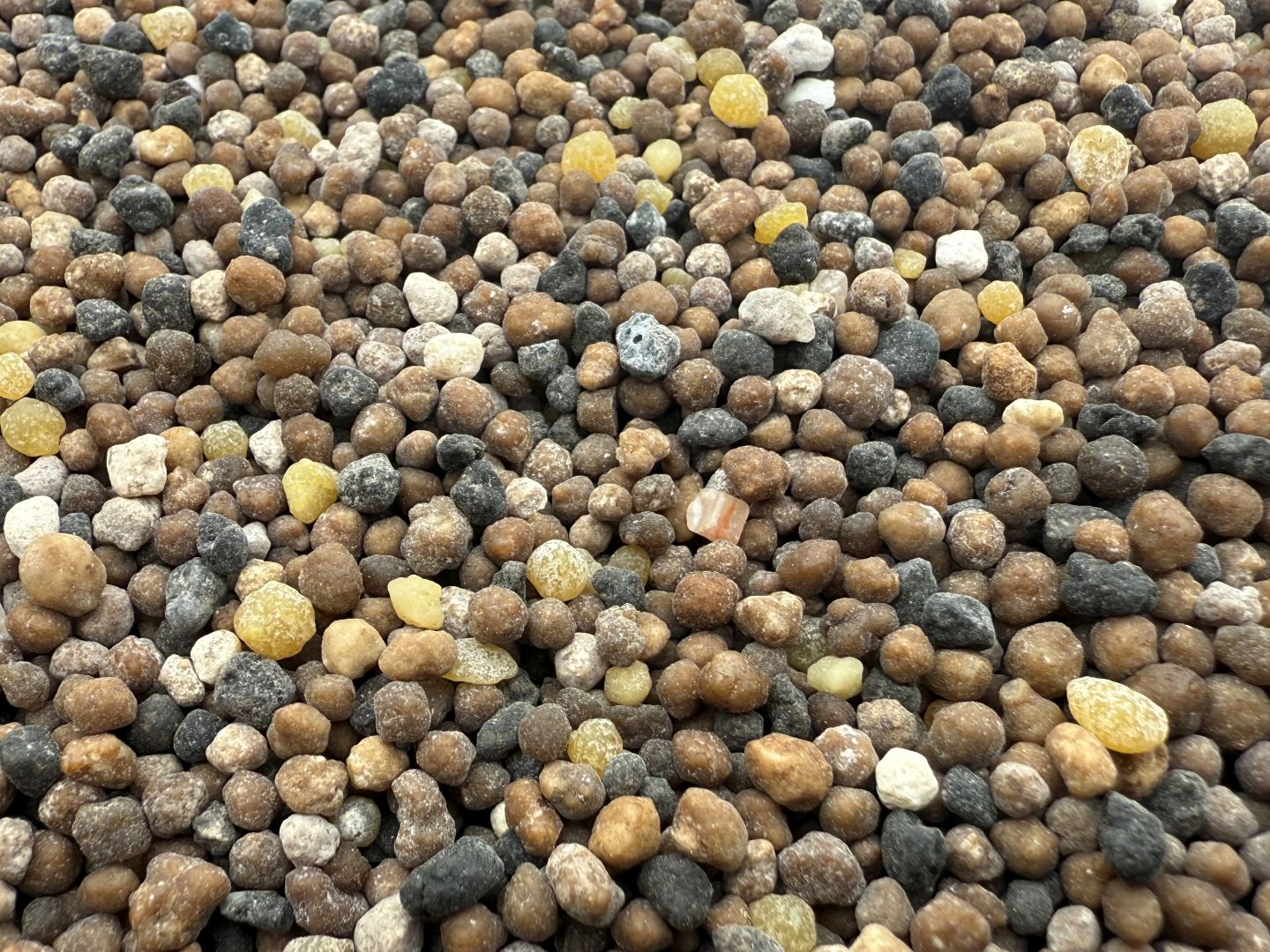Phosphates are a valuable part of our daily lives. They are used in everything from medicines and fire extinguishers to animal feed and, most notably, commercial fertilizers. Today, we’re going to focus on their role in fertilizer production.
Phosphate is a relatively abundant natural resource found around the world. It is also one of the three essential nutrients required for any farming or gardening operation—alongside nitrogen and potassium.
In the United States, there are significant phosphate deposits located in Central Florida, Idaho, Wyoming, and North Carolina. These deposits are actively mined to produce a widely used fertilizer known as Diammonium Phosphate (DAP). DAP is a staple in commercial farming operations of all types. Its standard nutrient analysis is 18-46-0—meaning it contains 18% nitrogen, 46% phosphate, and 0% potassium by weight. DAP is a homogeneous product, meaning every granule has the same nutrient composition, ensuring consistency in application.
Several countries around the world also have large-scale DAP production capabilities. Morocco is one of the leading producers globally, alongside Russia, China, Saudi Arabia, and Australia. However, phosphate is uniquely critical to Morocco’s economy, where phosphate mining and related industries account for approximately 90% of the country’s GDP.
With so much DAP production around the world, one might wonder: Why is it currently so expensive?
The answer lies in global supply and demand dynamics. Demand remains high, particularly from large agricultural economies like Brazil and India. Brazil, for instance, can grow two crops per year, which significantly increases its fertilizer needs. India heavily subsidizes fertilizer imports, making products like DAP more affordable for its farmers while driving up global demand.
Meanwhile, trade policies also impact the market. The United States has imposed Countervailing Duties (CVDs) on DAP imports from Morocco and Russia—16.6% and 28.5% respectively—due to government subsidies provided by those countries. In addition, many other nations have imposed tariffs of 10% or more on DAP imports, further tightening global supply.
Currently, the NOLA (New Orleans, Louisiana) market for DAP is in line with global prices. However, if global demand decreases and trade restrictions remain in place, the U.S. could face a situation where DAP prices significantly outpace those in other parts of the world due to these CVDs and tariffs.

